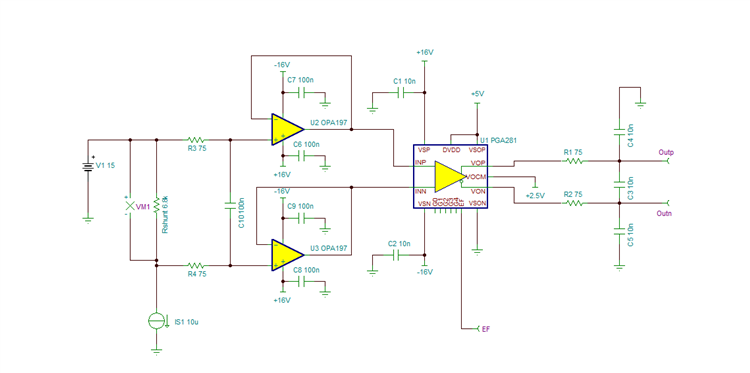Other Parts Discussed in Thread: OPA2191, OPA2197
With the PGA281 is it possible to measure 10uA to 100mA with a voltage of ±15V.
We use it as a High-Side current measurement solution.
My question is:
1. Is it possible to measure 10nA with an input voltage of ±15V. If Yes How??
If No
2. Is there an other PGAxxx or something else with a programmable gain that does lower currents at high voltage range (±15V. )


